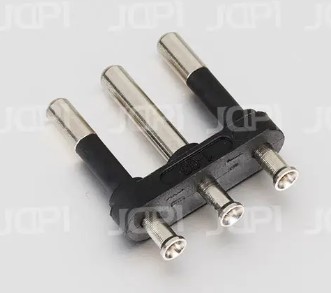Italian plug inserts are designed to meet specific voltage and frequency standards, and understanding these standards is crucial for residents and travelers alike. Italy, like many countries, has its own unique electrical specifications that impact the safe and efficient operation of electronic devices and appliances.
Voltage Standard: The voltage standard in Italy is 230 volts. This voltage level is the norm for residential and commercial electrical systems throughout the country. It's important to note that 230 volts is significantly higher than the 120-volt standard commonly found in North America. This disparity in voltage can lead to various issues if not addressed properly.
The higher voltage in Italy is a result of its electrical infrastructure and grid design. While it provides more power for electrical devices, it also requires a different approach to electrical safety and appliance design. Italian households and businesses are equipped with electrical outlets that deliver 230 volts, and this is the voltage that most appliances and devices are built to handle in the country.
Frequency Standard: Italy, like many European countries, operates on a frequency of 50 Hertz (Hz). The frequency, measured in Hertz, denotes the number of alternating current (AC) cycles per second. In Italy, the standard frequency is 50Hz. This frequency is also widely adopted in most European countries and is compatible with the electrical grids of many nations worldwide.
The 50Hz frequency is crucial for the proper functioning of electronic devices and appliances, as it determines the rate at which alternating current alternates its direction. Incompatibility with the local frequency can lead to operational issues, overheating, or damage to appliances and devices.
It's important to note that Italy's frequency standard differs from the 60Hz frequency used in North America. This difference may pose challenges for travelers and expatriates who bring their devices from North America to Italy. Devices designed for the North American market may not operate as efficiently on the 50Hz frequency and may require additional consideration.
Implications for Travelers: For travelers visiting Italy from regions with different voltage and frequency standards, it's essential to consider the implications of these variations. Using electronic devices and appliances not designed for Italy's 230V and 50Hz standards can result in the following issues:
-
Overvoltage: Plugging a device designed for a lower voltage (e.g., 120V) into an Italian outlet can lead to overvoltage. Overvoltage occurs when a device receives a voltage higher than it can safely handle. This can result in severe damage or even complete failure of the device. It's important to use voltage converters or voltage-compatible devices to prevent overvoltage.
-
Undervoltage: Conversely, if you plug a device designed for 230V into an outlet in a region with a lower voltage (e.g., 120V), it may not receive enough power to operate correctly. This can cause malfunctions or prevent the device from functioning at all.
Precautions for Travelers: To address voltage and frequency differences when traveling to Italy, consider the following precautions:
-
Check Device Specifications: Always check the voltage and frequency specifications of your electronic devices before traveling. Many modern devices, especially those like laptops and smartphones, are designed to work with a wide range of voltages (e.g., 100-240V) and frequencies (50-60Hz). Devices with this flexibility are ideal for international travel.
-
Use Voltage Converters/Transformers: In cases where your devices are not compatible with the local voltage, you can use voltage converters or transformers. These devices can adjust the voltage from the local supply to match the requirements of your device. However, not all devices are suitable for use with voltage converters, and they can be bulky and costly.
-
Check Power Supply Compatibility: For specific electronic devices, such as laptop chargers, you may be able to replace the power supply or adapter with one designed for the local voltage. This can be a more convenient solution if compatible power supplies are available.
-
Use Plug Adapters: While plug adapters are not a solution for voltage differences, they are essential for physically connecting your devices to foreign outlets with different plug types. Using the right plug adapter ensures that your device can physically connect to the Italian electrical outlet.
In summary, understanding the voltage and frequency standards for Italian plug inserts is vital for travelers and residents. Italy operates on a 230V and 50Hz electrical system, which differs from the standards in many other parts of the world. Travelers should be aware of these differences and take appropriate measures to ensure the safe and efficient use of their electronic devices while in Italy. Checking device specifications, using voltage converters when necessary, and using the correct plug adapters are all part of a comprehensive strategy for dealing with these electrical variations.



 English
English Deutsch
Deutsch













